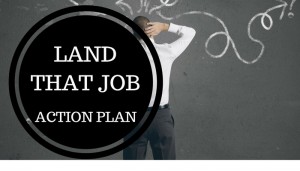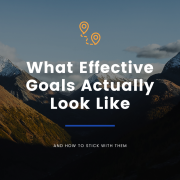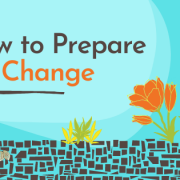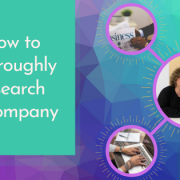How to Write a Stand-Out LinkedIn Summary
Career Tools Cover Letter Job Hunting LinkedIn Personal Branding
The standard three-paragraph format for writing a LinkedIn summary is (1) describe what you do, (2) share a few attributes, and (3) have a call to action (“I’m looking for a new role…” or “Feel free to connect with me…”).
I encourage more personality in LinkedIn profiles. Especially because increasingly hiring managers and recruiters use LinkedIn to source potential candidates—they’re looking at A LOT of profiles, day in and day out. Any formula gets old after you’ve read it 100 times.
Here’s the secret sauce I use to help clients write interesting LinkedIn profiles: Ask yourself great questions. What’s a great question? It’s the one where you get excited when you answer. When it lands, you hear a thud because it’s about to reveal something important.
Here’s how you can use my technique to write your own LinkedIn summary:
Preparation
On a piece of paper, chart your career highs and lows. It should look like an economist’s chart of the stock market or some other official, complex information simplified into chart format. Your career successes. Turning points. Great projects. Painful projects. Good career decisions. Unfortunate decisions. Great bosses. Growth periods. New skills acquired. Don’t make it too complex or overly detailed. Just interesting moments in your career that help to explain how you got from there to here.
The Interview
Picture this scenario: You’re going to introduce this person (you) at an event where the audience is a bunch of your peers—not too formal and you certainly don’t want it to sound like you’re reading a script. Every. Word. Counts. You’re going to be the curious reporter who has a 4 p.m. deadline (it’s now 3:34) and you must learn everything you can about this person (you) in the next 25 minutes.
Great Questions
Pick the ones that resonate with your career story and help to reveal your uniqueness.
- How did you end up doing (whatever you’re doing now)?
Is your audience hiring managers/recruiters, or are you using your profile to network? Tell the story that will help them connect the dots with the narrative your résumé misses. High level context only, please.
- What do you love about what you do?
Professional enthusiasm sells. “One of my favorite projects was a grueling corporate audit that was several intense months of work. It was an advanced degree in risk management best practices.”
- What successes are you most proud of? How do they relate to your career direction or your professional expertise?
A client who’s a project manager described that he gets assigned to the teams that are struggling. He’s got a knack for getting projects back on track.
- Did you have a major career turning point or epiphany that pointed you down another path?
For example, I know someone who was a graphic designer who had a “I-can’t-do-this-anymore” moment when she was asked to design one of those direct mail fake sticky notes. She’s now an architect with a specialty in interiors.
- What would surprise people to learn about your career?
Is there a story here? A plot twist that helps you to stand out?
- How have your roles provided you with specialized knowledge? How is that knowledge important?
If it’s not obvious from your job titles or industry niche, point it out. Sure, you know your background inside out, but your audience doesn’t.
- How do current and former colleagues describe your role or what you do well?
“Coworkers tell me I’m hard-working and dedicated” is clichéd, even if it’s true. Give an example instead: “I’m at my best behind-the-scenes, attending to all of the logistical details it takes to pull off week-long events for 100 to 1000 attendees.”
- What do people tend to remember about your career path or your expertise?
My career involves a couple of cross-country moves and reinventing myself professionally a few times. Turns out these are relatable and interesting parts of my experience to my audience.
Tips:
- Record your answers and then transcribe them. We tend to talk more casually than we write, and a more conversational tone is perfect for social media.
- Write your profile in the first person “I’ve worked…” LinkedIn summaries written in third person are so 2007.
- Ditch the call to action unless you really need it.
- Need some inspiration? Here are some authentic profiles.

I’m Stacey Lane: Career Coach | Transition & Career Strategist | Personal Brand Specialist
I help individuals with unique backgrounds find their perfect fit and effectively market themselves so they find work that is as interesting as they are.
Contact me to get started!
Ready to launch a job search but not sure where to start? If you haven’t looked for a job in the past few years, it’s easy to get overwhelmed. Get into action quickly with my free “Land That Job Action Plan.”




